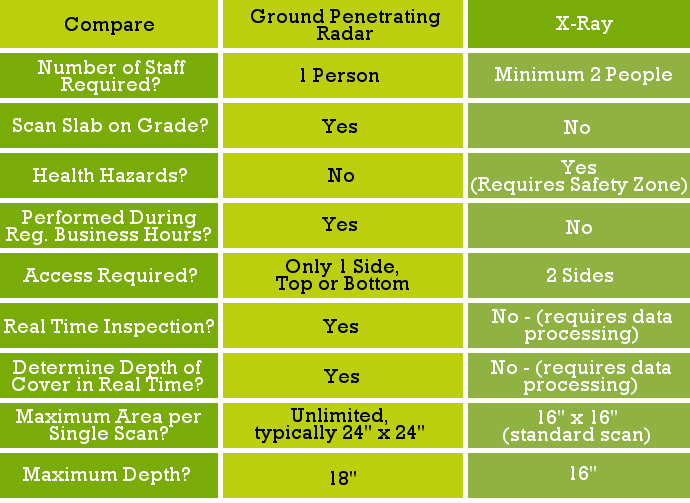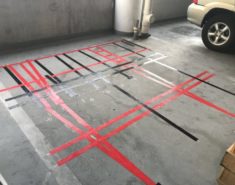
Concrete Scanning
Ground Penetrating Radar or GPR is a safe and efficient non-destructive method to determine the presence of post tension cables, reinforcing steel (rebar), conduits or other embedded material in poured concrete. The concrete scanning or imaging can be completed in real time. The real time findings are marked directly on the surface and allows for minimal downtime. The electromagnetic signal is safe and poses no health hazards, the signal gives off approximately 1% of the energy of a cellular phone.
Ground penetrating radar works by sending a electromagnetic pulse into the concrete via an antenna. The signals are reflected back to the antenna creating an image of the embediments. The results are displayed on the computer unit for interpretation by the on site technician.
Advantages of Ground Penetrating Radar
- Real time results
- Safe to use and releases no radiation
- No safety or buffer zone needed
- No limit on size of scan area
- Only requires access to one side of the concrete

Concrete Applications for Ground Penetrating Radar
- Scanning of elevated slabs to locate post tension cables, rebar and conduits.
- Slab on grade to locate conduits in and below the concrete slab.
- Locate voids in and below the concrete.
- Scanning of concrete masonry unit (CMU) walls to locate reinfocing steel. Can also locate the grouted and un-grouted cells in the block.
- Determine the thickness of the concrete
- Determine depth and spacing of anomalies in the concrete
- Scan Columns and Footers for location and spacing of rebar

